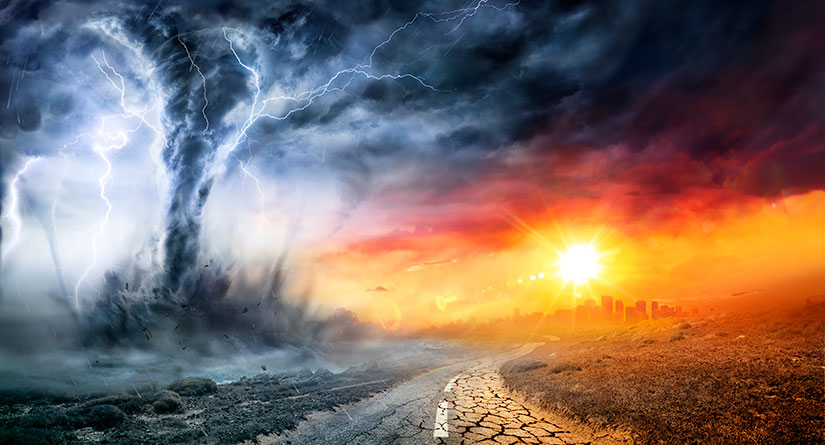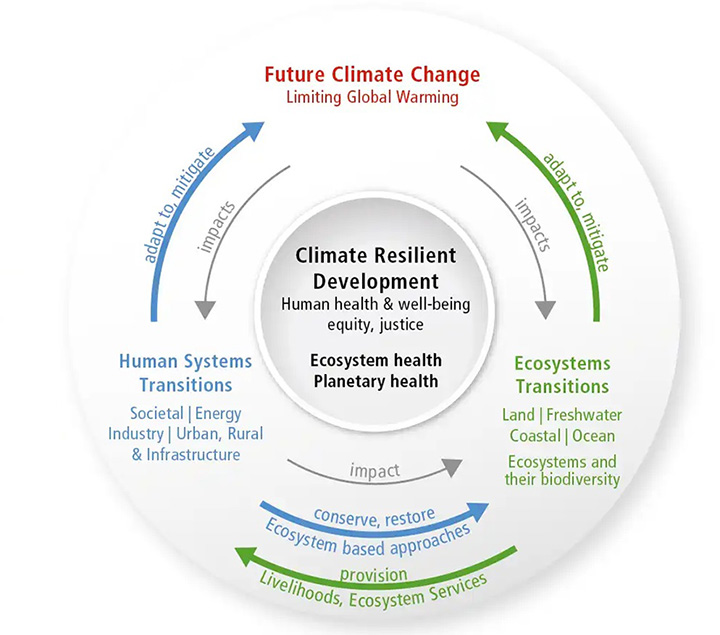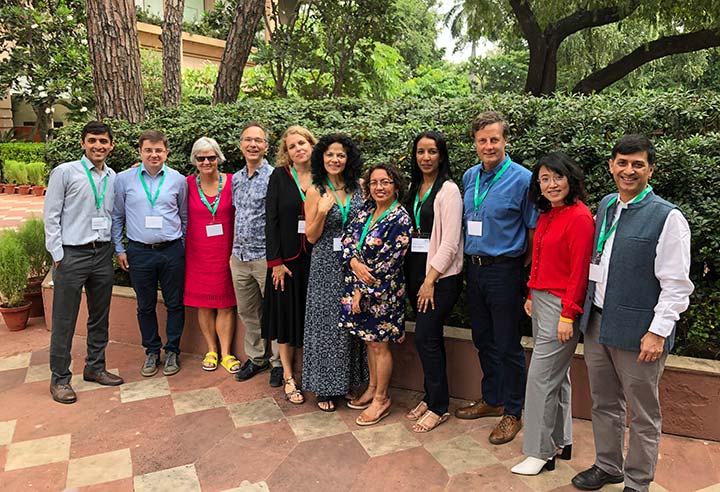NREL Scientist Joins United Nations Team in Identifying Opportunities To Slow Climate Change

Rising temperatures and sea levels. More frequent and severe hurricanes, wildfires, floods, and droughts. Deteriorating air and water quality. All of these trends can be traced back to climate change—with cities facing disproportionate risks due to rapid population growth, even as their roles as infrastructure hubs provide greater opportunities for mitigation.
The United Nations' Intergovernmental Panel on Climate Change (IPCC) recently released the third in a series of reports detailing the risks and realities of climate change. Senior Researcher Patricia (Paty) Romero-Lankao of the U.S. Department of Energy's National Renewable Energy Laboratory (NREL) played a pivotal role in two of the reports, looking at the drivers and impacts of greenhouse gas emissions and resulting rising temperatures in urban and rural settlements.
"We all know that the world is warming, but the current intensity is unprecedented," IPCC Author and NREL Behavioral Scientist Romero-Lankao said. "In cities worldwide, poor and disadvantaged communities are more vulnerable to the effects of climate change. These reports allowed us to examine how can we avert catastrophic heat waves, food shortages, and displacement of homes."
NREL is leveraging its decades of clean-energy leadership to help shape a more sustainable, resilient, and equitable climate future. Romero-Lankao plays an important role in advancing this mission, bridging the distance between science and real-world community action, providing keen insight on strategies to maximize results by motivating decision-makers and communities to be part of the solution.
Seizing Opportunities To Mitigate Climate Change

The IPCC reports can be used by decision-makers to mitigate the overlapping hazards, vulnerabilities, and exposure risks of climate change. Figure by IPCC
In the latest IPCC report, Mitigation of Climate Change, Romero-Lankao acted as lead author for a chapter on how national-level agencies and institutions can individually and jointly shape climate policy. Released on April 4, the report examines emission sources and reduction options. It also highlights how preventing climate change can support other goals, such as reducing poverty, improving quality of life, eradicating malnutrition, and preserving biodiversity.
"Yes, we needed to step back and review the state of the global environment," Romero-Lankao said. "But it was crucial to pair the identification of crises with actionable information. We felt this was the best way to give decision-makers around the world a shot at halting or even reversing these damaging trends."
Romero-Lankao's chapter in the report spotlights cost-effective opportunities for people and businesses to reduce emissions in transportation, industry, and buildings, while improving personal and environmental well-being. Strategies including adoption of electric car ride-sharing, rooftop solar systems, and energy-efficient appliances are rapidly becoming more affordable and popular.
"Our team looked at those economic instruments designed to induce compliance on the part of industry," Romero-Lankao said, "as well as provide consumers with the infrastructures and provision systems that make it easy to shift to cleaner products and practices."
These approaches can be harnessed in inclusive ways to spur rapid and equitable deployment spanning the geographic, political, and cultural divides between neighborhoods, cities, states, and countries. NREL is helping evaluate the benefits and risks of different technologies and policy approaches to better understand impacts of implementation at scale, identify economic and sociocultural barriers, and forecast potential changes in behavior and societal standards.
Identifying Potential Impacts on City Dwellers

For the IPCC Impacts, Adaptation and Vulnerability report published earlier this year, Romero-Lankao served as one of two review editors for the "Cities, settlements and key infrastructure" chapter. The chapter team not only explored the impact of climate change on lives, homes, income, community infrastructure, and assets. It also recounted opportunities for cities to build community climate resilience into technological and infrastructural investments, with measures such as climate-proofing of houses and infrastructure, and thoughtful approaches to land-use planning.
"Many people in impoverished urban communities might already lack basic access to air conditioning and clean drinking water, living in buildings they do not own, without insurance to cover their needs if something goes wrong," Romero-Lankao said. "That's when we see people in some of the largest cities in the world suffering as temperatures skyrocket during power blackouts or floodwaters sweep through neighborhoods."
These are far from the first contributions Romero-Lankao has made to the United Nations and its IPCC studies. She was also a contributing author on reports that led to IPCC and former Vice President Al Gore being awarded the 2007 Nobel Peace Prize for their work on climate change.
Every seven years, the IPCC publishes a series of reports assessing the science related to climate change. The full current series of IPCC reports features authors and editors representing 105 countries.
The first report in the current edition of the series, The Physical Science Basis, was published in 2021. A final synthesis report summarizing top findings from all three reports will be published in September 2022.
"If the IPCC projections hold true, by 2050 global temperatures will spike more than 1.5°C (2.7°F) above pre-industrial levels and 2.5 billion more people will live in cities," Romero-Lankao said. "The good news is that we still have time to make positive changes—we have so many options for meaningful action as a nation and as individuals."
Learn more about NREL's efforts to combat climate change and Romero-Lankao's behavioral science research.
